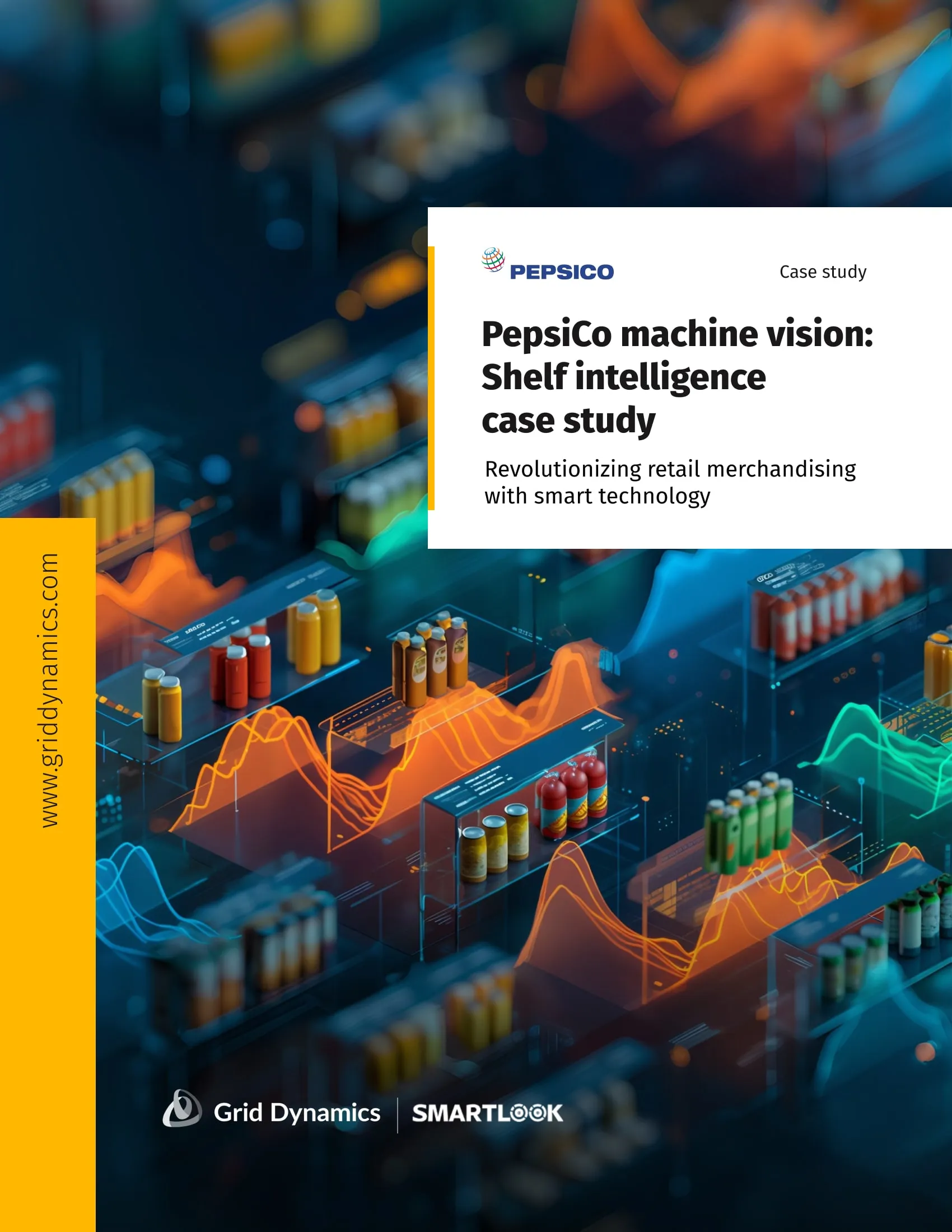Get the Case Study

Revolutionizing retail merchandising with smart technology
PepsiCo, one of the largest food and beverage companies in the world, takes a deeply customer-centric approach to in-store merchandising and accessibility. Producing iconic brands such as Pepsi, Lay’s, and Gatorade, which are enjoyed by consumers a billion times a day, makes strategic product displays, share of shelf, and optimal stock levels extremely important for optimal customer experiences. PepsiCo understands that meeting and exceeding these customer experience objectives means leveraging advanced artificial intelligence and analytics to drive informed strategies and decision-making.
That’s why PepsiCo embarked on a transformation journey in 2021, seeking an innovative PepsiCo Shelf Intelligence solution to revolutionize its retail operations.
Collaborating with technology leaders Grid Dynamics and Smartlook, PepsiCo needed to overcome the limitations of traditional retail shelf intelligence approaches, automate the merchandising process, and optimize the cost of ownership. The case study shows how they tackled it with edge AI and computer vision to audit shelves in seconds, guide merchandisers in real time, and capture trusted data for decisions.
Download the full case study for the architecture, results, and rollout playbook.
What’s inside
- A mobile-first, on-device recognition engine that identifies SKUs and price tags, compares to planograms, and prompts corrective actions.
- A deep learning pipeline that blends object detection and OCR to map prices to products with high accuracy.
- Feature set built for retail operations: retail space audits, shelf share analysis, price monitoring, POPM checks, automated reporting, and on-shelf availability.
- Outcomes and benchmarks related to cost savings and operational efficiency, recognition accuracy and performance, integration and security, and technical improvements.
Get the full case study to see how the PepsiCo Shelf Intelligence solution turned shelf vision into measurable revenue impact, and how to replicate it at enterprise scale.
Tags
You might also like
This leading automotive aftermarket company replaced 12+ year-old legacy platforms with a composable MACH architecture that now supports the growth of its multi-brand B2B automotive parts distribution business across Europe. The automotive commerce modernization results speak for themselves:...
As the largest omnichannel mattress retailer in the U.S., Mattress Firm’s 6,000+ Sleep Experts® are trusted advisors guiding customers to better sleep across 2,200+ stores. But with product information, promotions, financing options, training materials, and operational procedures spread across...

Download the full case study now to explore how this tools distributor reimagined their automotive ecommerce experience for future success. By downloading, you'll gain access to exclusive insights that can help inform your own digital transformation strategies. Whether you're in the automotive i...
Grid Dynamics won the 2024 Contentstack Experience Award for Most Innovative Project by empowering this global sports brand to rapidly deliver personalized digital experiences. When a leading sporting goods retailer with a global footprint faced challenges with its outdated content managemen...

In 2022, Clarks, the iconic 200-year-old footwear brand, faced a critical digital crossroads. With massive global sales and an outdated e-commerce platform, Clarks partnered with Grid Dynamics to architect and launch an all-new Clarks.com. This case study reveals how they transformed from a legacy...

Discover how we've reshaped tire recognition technology through advanced AI methodologies, leveraging deep learning visual models and seamless integration with Amazon Web Services (AWS). In collaboration with a prominent automotive industry leader, we've addressed the critical need for precise tire...
E-commerce has undergone a profound transformation in recent years, driven by soaring customer expectations. Shoppers now demand seamless omnichannel experiences, lightning-fast site speeds, and rapid innovation to meet evolving market demands. However, traditional monolithic architectures struggle...







